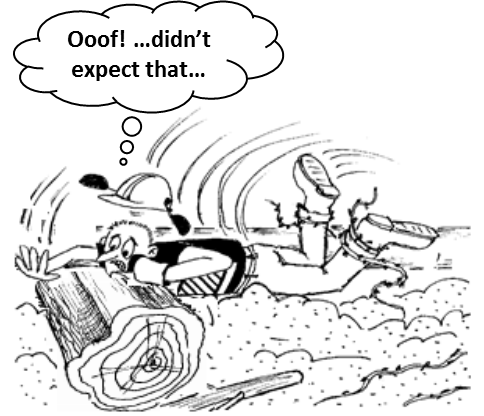Minor Injury. Return to Work

Background - Noggin INC1338 01/09/18
While checking log lengths during quality control, a worker walked on top of a log and slipped. He landed chest first onto a log end hurting and bruising his ribs.
The QC worker, an industry trainee was not wearing spiked boots and the seasonal sap flow made the logs slippery. What could have prevented this injury from occurring and the resulting time off work?
Learning from this Incident
With the onset of warmer spring conditions tree-sap starts running causing freshly cut logs, that have little or no bark, to be slippery. While spike boots provide better grip, wherever possible, workers should walk alongside the log or stem rather than on top. Machine operators can also assist ground workers by spacing the logs apart to enable quality checking from alongside also see page 6.
The second learning is to do with injury management practices. While it is not our intention to encourage the walking wounded back to work, sometimes an injury is relatively minor and does't require any time off work. In fact, the medical consensus and research shows that remaining at work, on light (alternative) duties may be best and that our health and welfare are generally improved by staying at work during our recovery. How can we take advantage of this information?
- Have a positive and proactive attitude toward Return to Work (RTW) procedures.
- Produce a RTW procedure and help employees understand what to expect if injured.
- Plan in advance the light duties available in your operation including training.
- Always accompany (and drive) an injured employee to the medical centre.
- Explain the RTW policy to the medical professional including the light duties available.
View this article in Safety Bulletin 115
